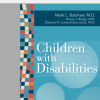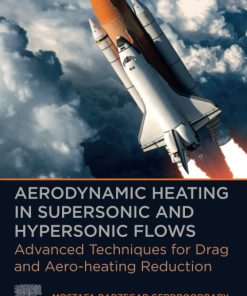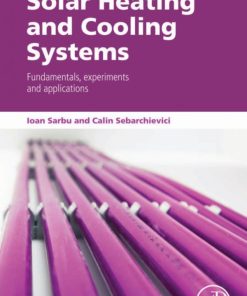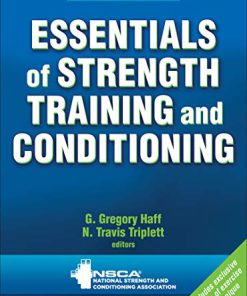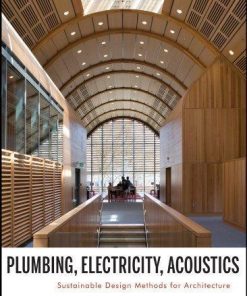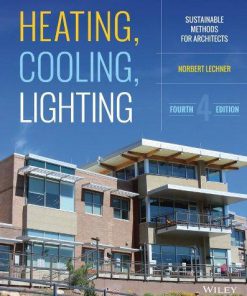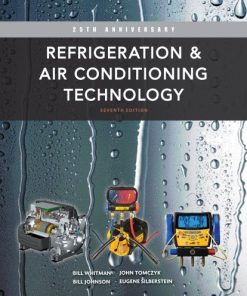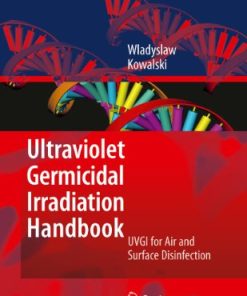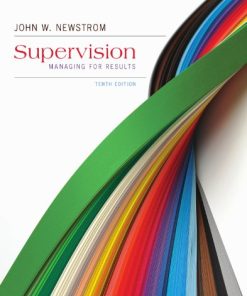Electricity for Refrigeration, Heating, and Air Conditioning 10th Edition, (Ebook PDF)
$50.00 Original price was: $50.00.$25.00Current price is: $25.00.
Electricity for Refrigeration, Heating, and Air Conditioning 10th Edition, (Ebook PDF) – Digital Instant Dowload.
Electricity for Refrigeration, Heating, and Air Conditioning 10th Edition, (Ebook PDF) – Digital Instant Dowload.
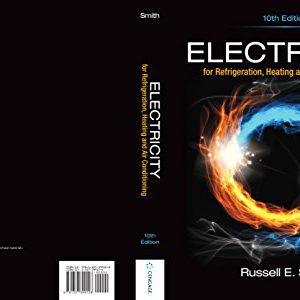
Product details:
- ISBN-10 : 1337399124
- ISBN-13 : 978-1337399128
- Author: Russell E. Smith
Master the electrical principles and practices you need to succeed as a professional installation and service technician with this trusted guide. Accurate and easy-to-understand, ELECTRICITY FOR REFRIGERATION, HEATING AND AIR CONDITIONING, Tenth Edition, will give you a strong foundation in essential electrical theory–and help you hone real-world skills and techniques you can apply on the job. Thoroughly updated for today’s professionals, the Tenth Edition includes up-to-date information based on current trends, technology, and industry practices–including key diagnosis and troubleshooting methods–making this an ideal resource whether you’re new to the field or a current practitioner ready to update your knowledge and skills. Now available with this text is The Complete HVAC Lab Manual, which features over 250 lab exercises, covering 15 topic areas. See the supplements section for more details.
Table contents:
Chapter 1: Electrical Safety
Objectives
Key Terms
Introduction
1.1 Electrical Injuries
1.2 Dealing with Shock Victims
1.3 National Electrical Code
1.4 Electrical Grounding
1.5 Circuit Protection
1.6 Circuit Lockout Procedures
1.7 Electrical Safety Guidelines
Summary
Review Questions
Chapter 2: Basic Electricity
Objectives
Key Terms
Introduction
2.1 Atomic Theory
2.2 Positive and Negative Charges
2.3 Flow of Electrons
2.4 Conductors and Insulators
2.5 Electric Potential
2.6 Current Flow
2.7 Resistance
2.8 Electric Power and Energy
2.9 Ohm’s Law
2.10 Calculating Electric Power
Summary
Review Questions
Chapter 3: Electric Circuits
Objective
Key Terms
Introduction
3.1 Basic Concepts of Electric Circuits
3.2 Series Circuits
3.3 Parallel Circuits
3.4 Series-Parallel Circuits
Summary
Review Questions
Chapter 4: Electric Meters
Objective
Key Terms
Introduction
4.1 Electric Meters
4.2 Ammeters
4.3 Voltmeters
4.4 Ohmmeters
Summary
Review Questions
Chapter 5: Components, Symbols, and Circuitry of Air-Conditioning Wiring Diagrams
Objective
Key Terms
Introduction
5.1 Loads
5.2 Contactors and Relays
5.3 Magnetic Starters
5.4 Switches
5.5 Safety Devices
5.6 Transformers
5.7 Schematic Diagrams
5.8 Pictorial Diagrams
5.9 Installation Diagrams
Summary
Review Questions
Chapter 6: Reading Schematic Diagrams
Objective
Key Terms
Introduction
6.1 Schematic Diagram Design
6.2 Reading Basic Schematic Diagrams
6.3 Reading Advanced Schematic Diagrams
Summary
Review Questions
Chapter 7: Alternating Current, Power Distribution, and Voltage Systems
Objective
Key Terms
Introduction
7.1 Basic Concepts of Alternating Current
7.2 Power Distribution
7.3 240-Volt-Single-Phase-60-Hertz Systems
7.4 Three-Phase Voltage Systems
7.5 240-Volt-Three-Phase-60-Hertz Delta System
7.6 208-Volt-Three-Phase-60-Hertz Wye System
7.7 Higher-Voltage Systems
Summary
Review Questions
Chapter 8: Basic Electric Motors
Objective
Key Terms
Introduction
8.1 Magnetism
8.2 Basic Electric Motors
8.3 Types of Electric Motors
8.4 Shaded-Pole Motors
8.5 Capacitors
8.6 Split-Phase Motors
8.7 Permanent Split-Capacitor Motors
8.8 Capacitor-Start-Capacitor-Run Motors
8.9 Three-Phase Motors
8.10 Electronically Commutated Motors
8.11 Direct Current Brushless Motors
8.12 Hermetic Compressor Motors
8.13 Service Call Protocol
8.14 Service Calls
Summary
Review Questions
Practice Service Calls
Chapter 9: Components for Electric Motors
Objective
Key Terms
Introduction
9.1 Starting Relays for Single-Phase Motors
9.2 Current or Amperage Relays
9.3 Potential Relays
9.4 Solid-State Starting Relays and Devices
9.5 Motor Bearings
9.6 Motor Drives
9.7 Service Calls
Summary
Review Questions
Practice Service Calls
Chapter 10: Contactors, Relays, and Overloads
Objective
Key Terms
Introduction
10.1 Contactors
10.2 Relays
10.3 Overloads
10.4 Magnetic Starters
10.5 Push-Button Stations
10.6 Service Calls
Summary
Review Questions
Practice Service Calls
Chapter 11: Thermostats, Pressure Switches, and Other Electric Control Devices
Objective
Key Terms
Introduction
11.1 Transformers
11.2 Thermostats
11.3 Staging Thermostats
11.4 Programmable Thermostats
11.5 Communicating Thermostats
11.6 Wi-Fi Thermostats
11.7 Pressure Switches
11.8 Miscellaneous Electric Components
11.9 Service Calls
Summary
Review Questions
Practice Service Calls
Chapter 12: Electronic Control Devices
Objective
Key Terms
Introduction
12.1 Electronic System Components
12.2 Basic Electronic Control Fundamentals
12.3 Simple Electronic Temperature Control
12.4 One-Function Electronic Controls
12.5 Electronic Timers
12.6 Electronic Devices for Electric Motors
12.7 Electronic Motor Protection Devices
12.8 Heat Pump Electronic Modules
12.9 Electronic Control Modules for Residential Gas Furnaces
12.10 Oil Furnace Electronic Controls
12.11 Troubleshooting Electronic Controls
Summary
Review Questions
Chapter 13: Heating Control Devices
Objective
Key Terms
Introduction
13.1 Heating Fundamentals
13.2 Basic Heating Controls
13.3 Gas Heating Controls
13.4 Oil Heating Controls
13.5 Electric Heating Controls
13.6 Hydronic and Steam Controls
13.7 Service Calls
Summary
Review Questions
Practice Service Calls
Chapter 14: Troubleshooting Electric Control Devices
Objective
Key Terms
Introduction
14.1 Electric Motors
14.2 Contactors and Relays
14.3 Overloads
14.4 Thermostats
14.5 Pressure Switches
14.6 Transformers
14.7 Electric Heating Controls
14.8 Gas Heating Controls
14.9 Oil Heating Controls
14.10 Service Calls
Summary
Review Questions
Practice Service Calls
Chapter 15: Residential Air-Conditioning Control Systems
Objective
Key Terms
Introduction
15.1 Residential Air-Conditioning Equipment
15.2 Basic Residential Control Circuitry
15.3 Packaged Air-Conditioning Control Systems
15.4 Split-System Air-Conditioning Control Systems
15.5 Heat Pump Control Systems
15.6 Heat Pump Sequence of Operation
15.7 Advanced Residential Control Systems
15.8 Mini-Split Control Systems
15.9 Field Wiring
15.10 Check, Test, and Start Procedures
15.11 Customer Relations
Summary
Review Questions
Chapter 16: Installation of Heating, Cooling, and Refrigeration Systems
Objective
Key Terms
Introduction
16.1 Sizing Wire
16.2 Disconnect Switches
16.3 Fusible Load Centers
16.4 Breaker Panels
16.5 Distribution Centers
16.6 Installing Electrical Circuits For Refrigeration, Heating, and Air-CondItioning Equipment
Summary
Review Questions
Chapter 17: Commercial and Industrial Air-Conditioning Control Systems
Objective
Key Terms
Introduction
17.1 Commercial and Industrial Heating and Air-Conditioning Equipment
17.2 Commercial and Industrial Control Circuitry
17.3 Commercial Condensing Unit
17.4 Commercial and Industrial Packaged Units
17.5 Air-Cooled Packaged Unit with Remote Condenser
17.6 Water-Cooled Packaged Units
17.7 Types of Total Commercial and Industrial Control Systems
17.8 Pneumatic Control Systems
17.9 Electronic Control Systems (Direct Digital Controls)
Summary
Review Questions
Chapter 18: Troubleshooting Modern Refrigeration, Heating, and Air-Conditioning Control Circuitry an
Objective
Key Terms
Introduction
18.1 Diagnosis of Electrical Components
18.2 Troubleshooting Tools
18.3 Troubleshooting with Electrical Meters
18.4 Using Troubleshooting Charts
18.5 Hopscotching: A Useful Tool for Troubleshooting
18.6 Troubleshooting Control Systems
18.7 Service Calls
Summary
Review Questions
Practice Service Calls
Appendix A
Appendix B
Glossary
Index
You may also like…
Technique - Transportation: Aviation
Uncategorized



